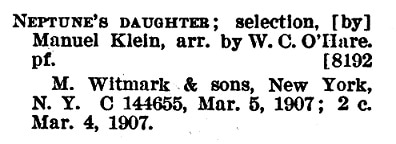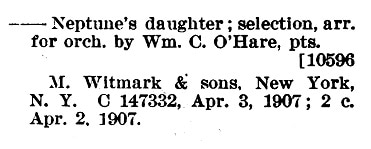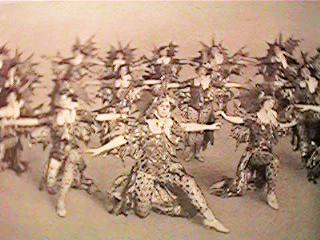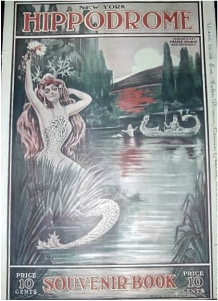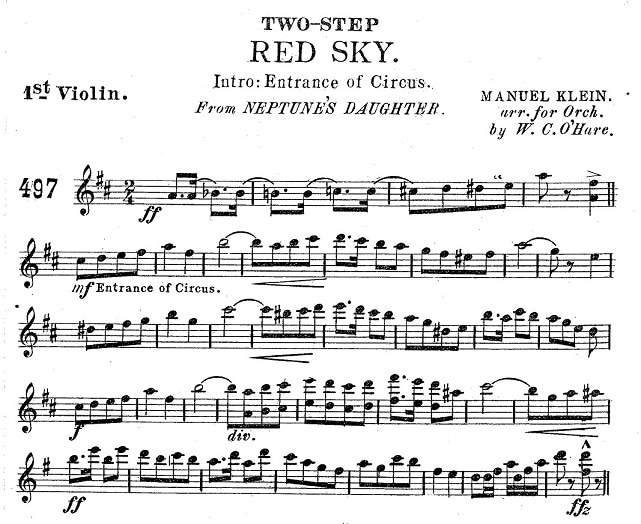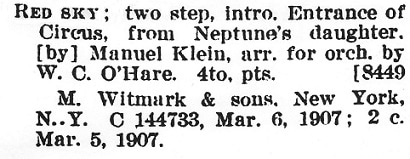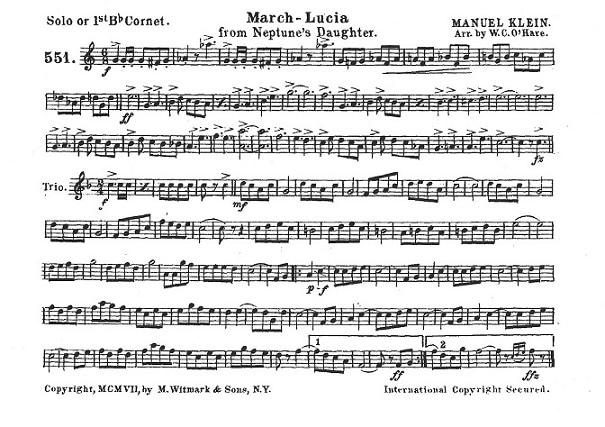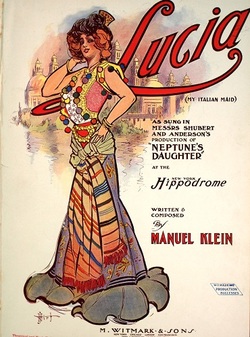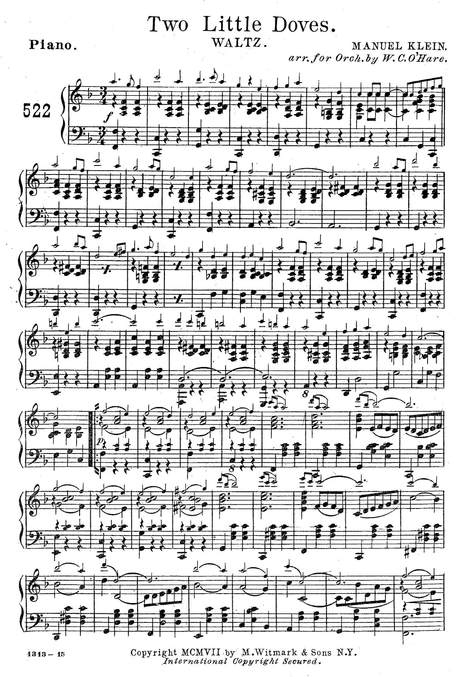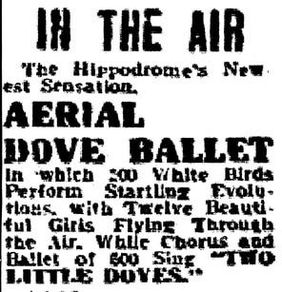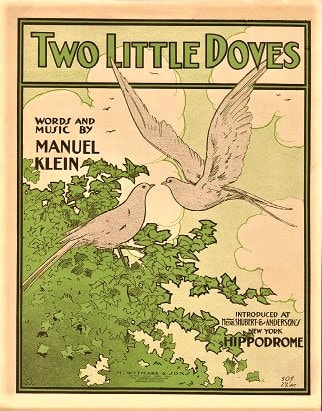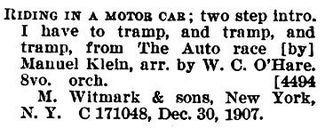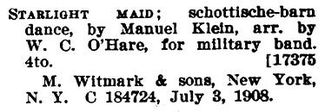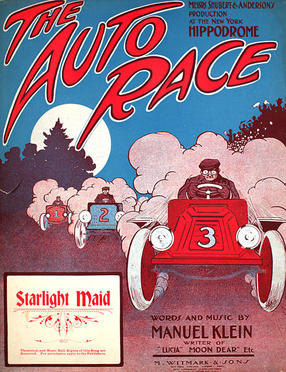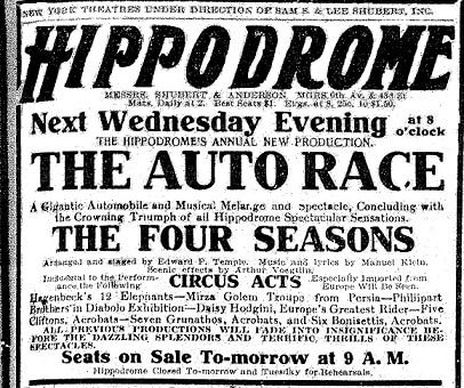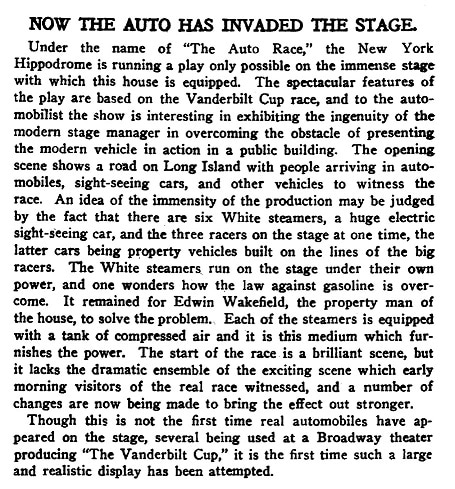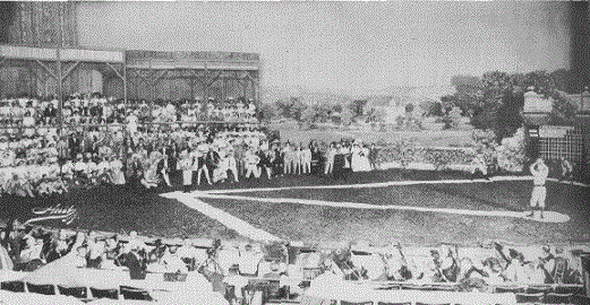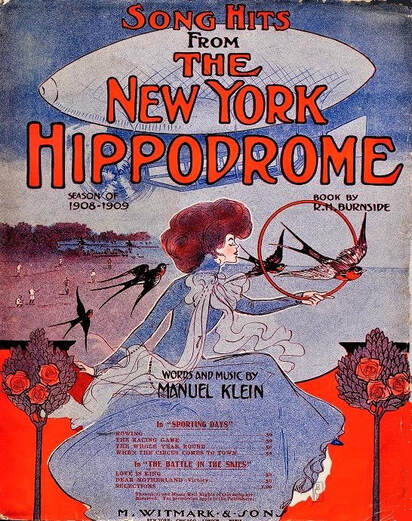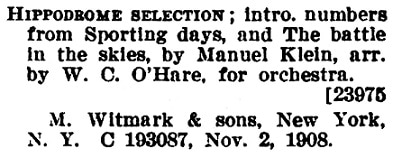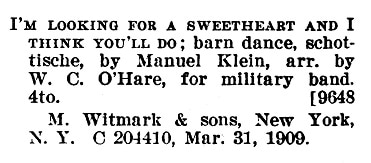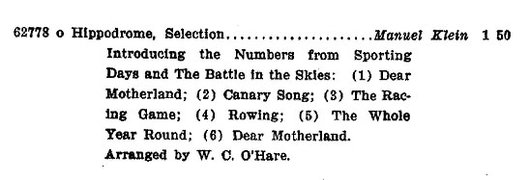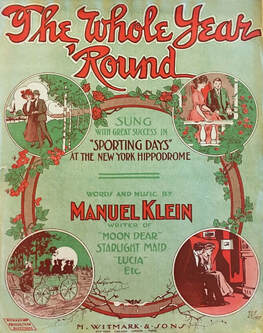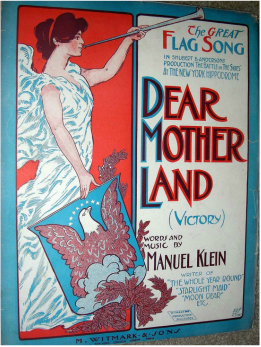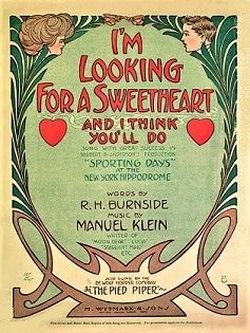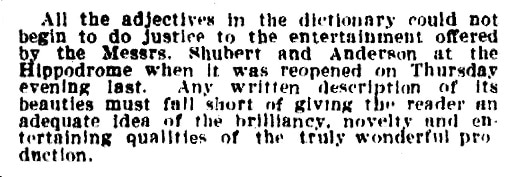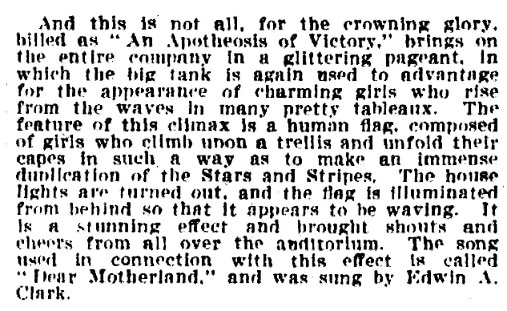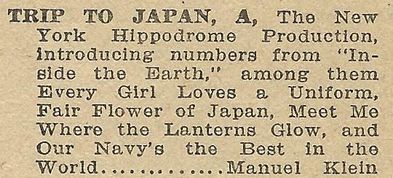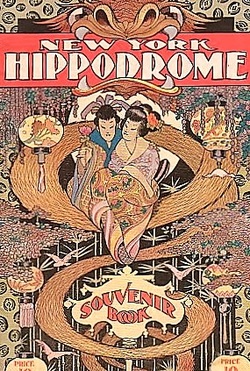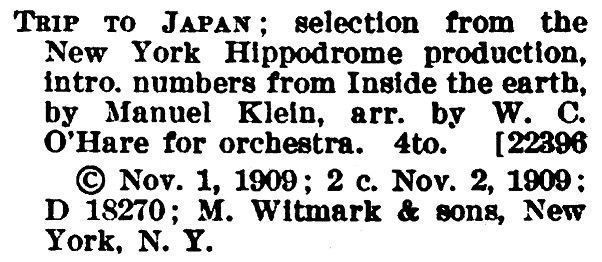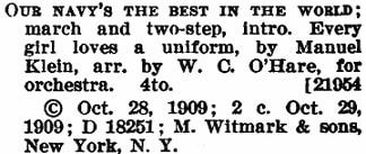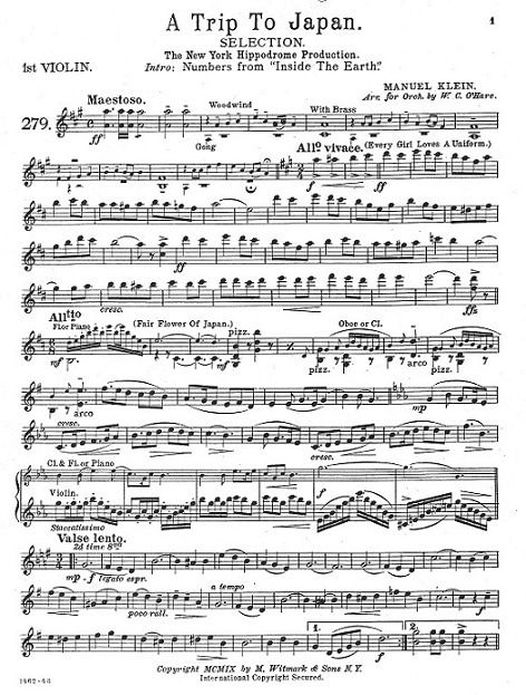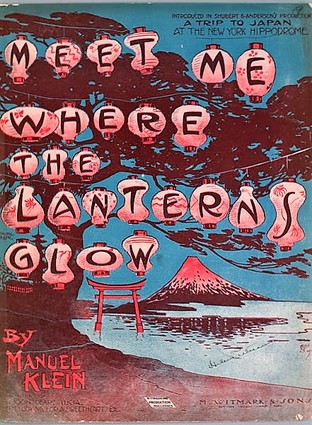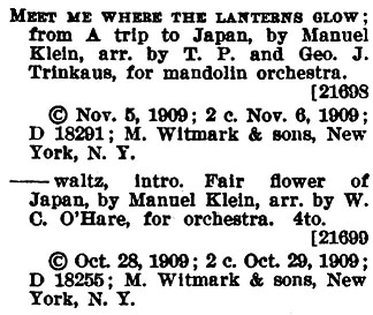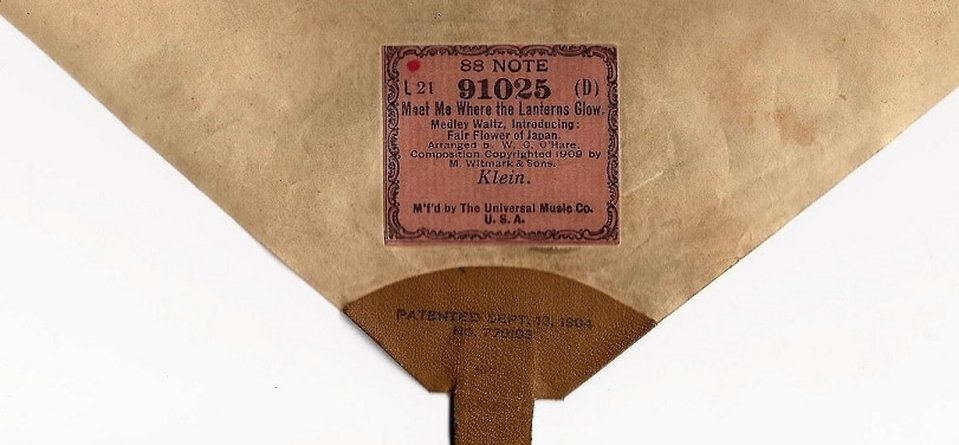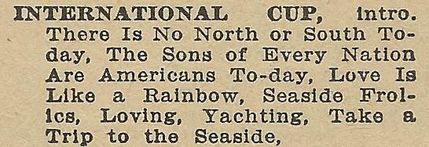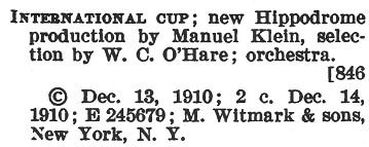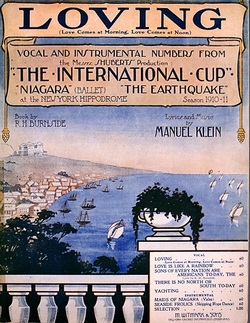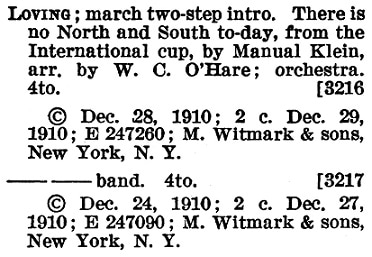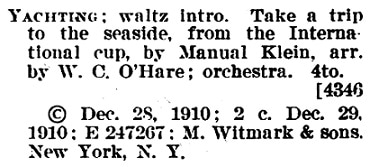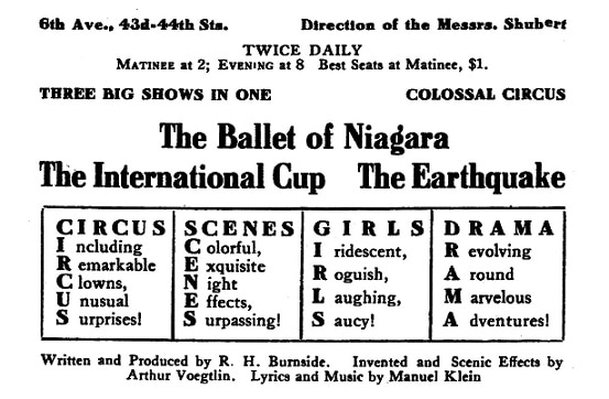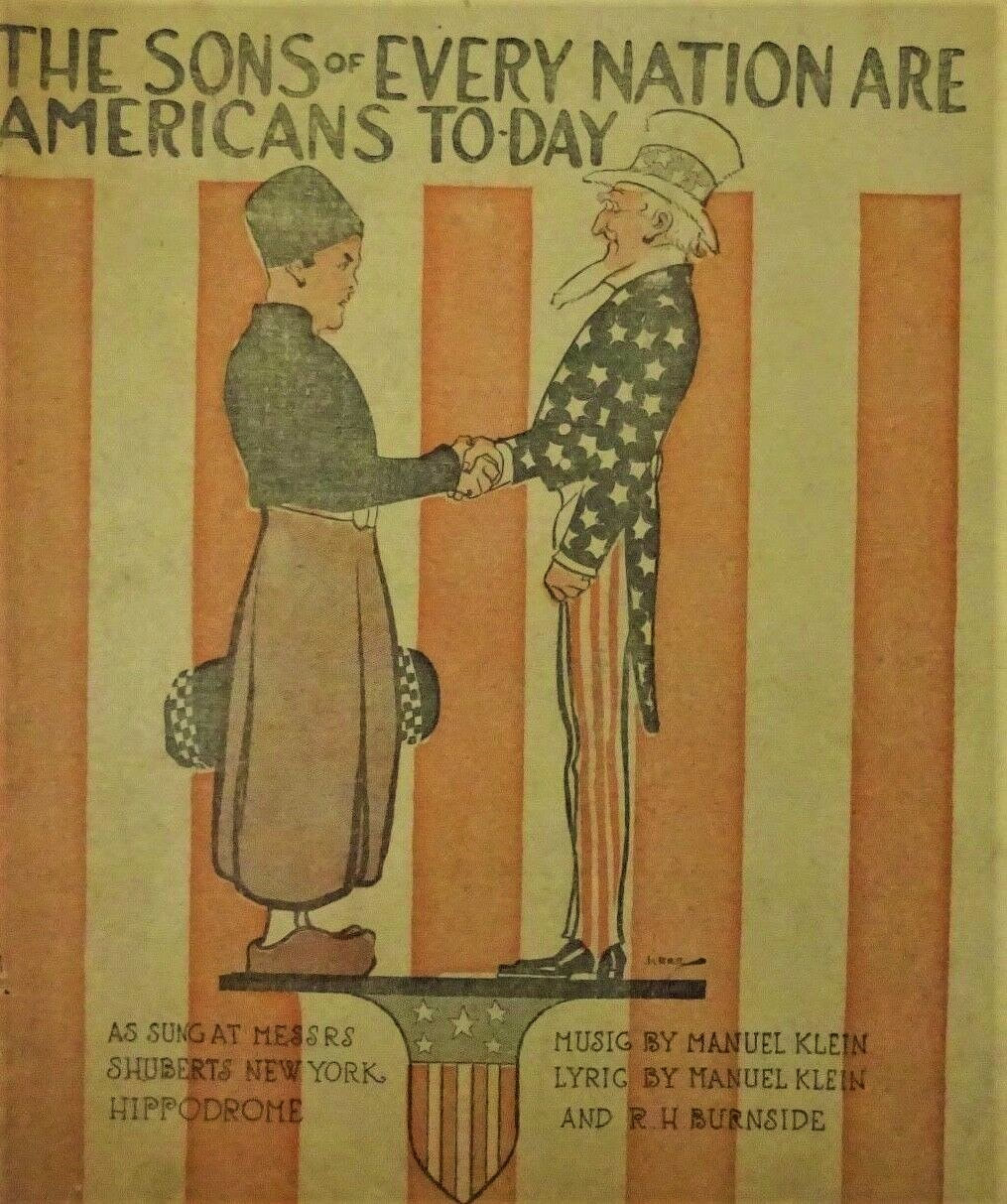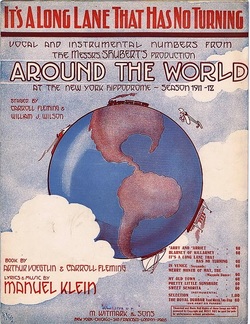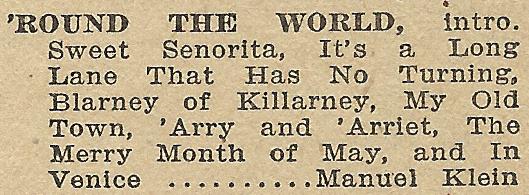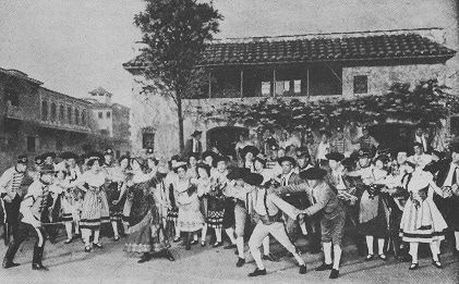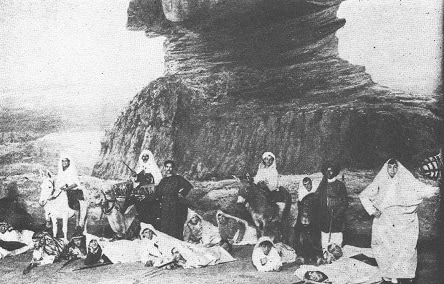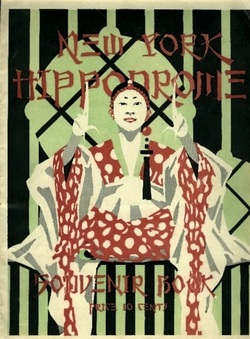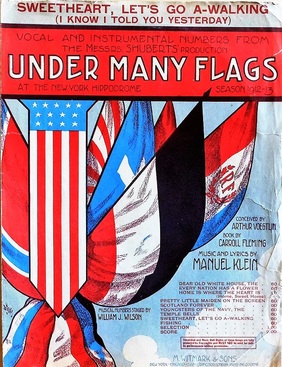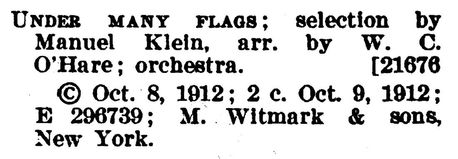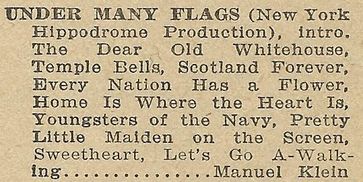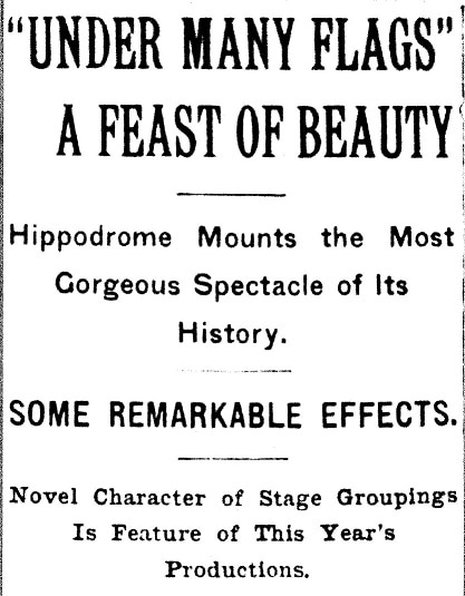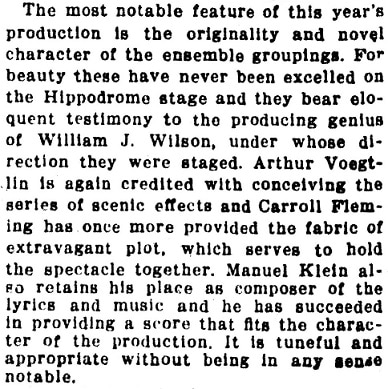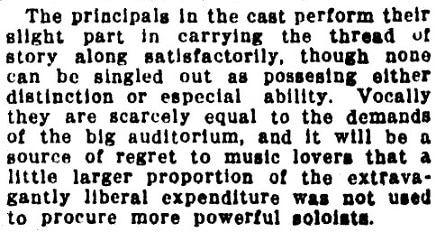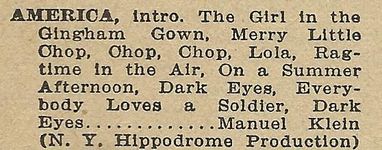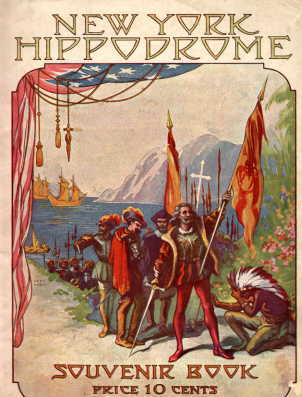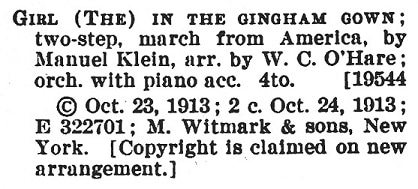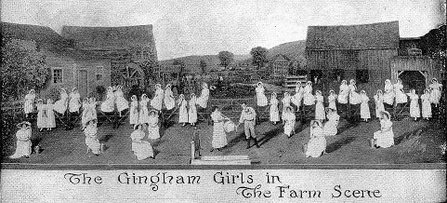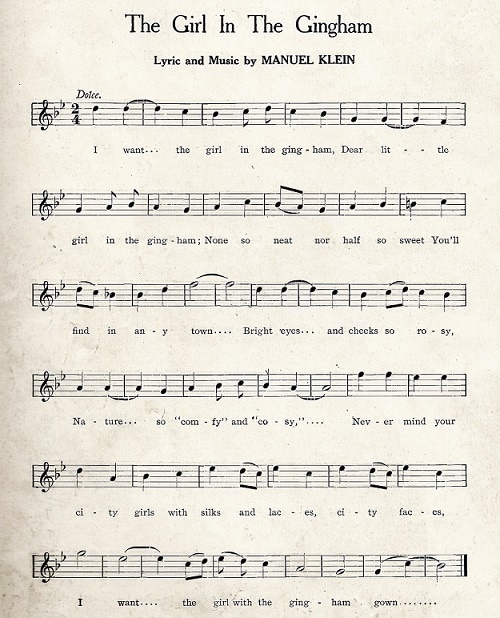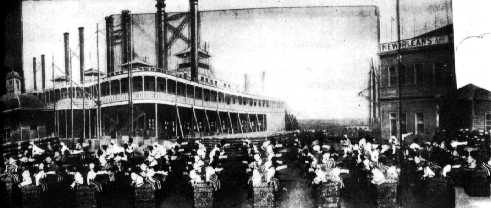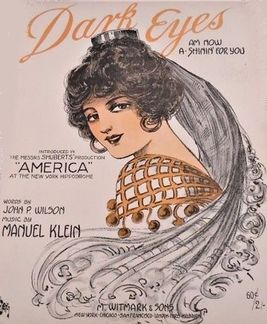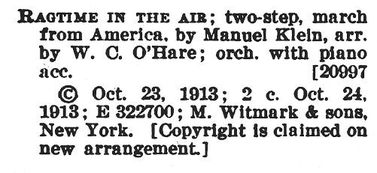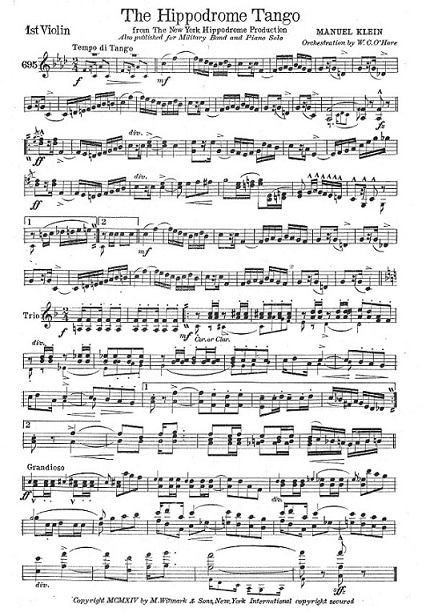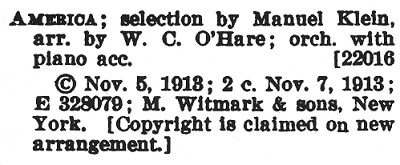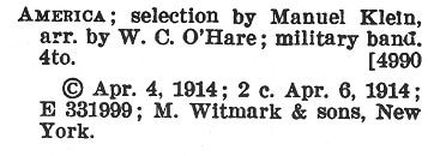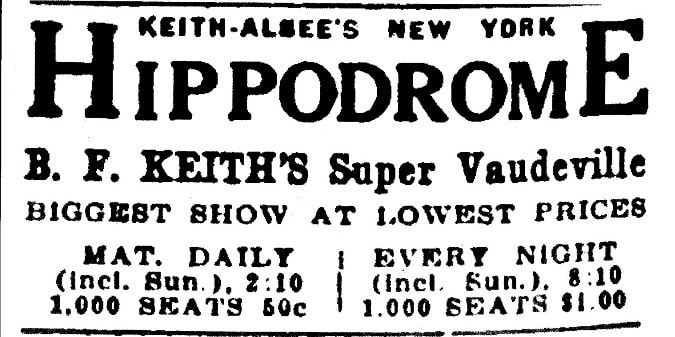Neptune's Daughter (1907)
Following A Society Circus' nearly 600 performances, Neptune's Daughter opened in late 1906 and ran until August 1907. Featuring an underwater cast of mermaids, this latest spectacle opened on the Brittany coast as families celebrated the impending return of their fishermen husbands and fathers. As villagers danced in wooden shoes, little did they imagine the tragic storm about to occur. Rescuers find only an infant girl under the water. She is raised in the village and known as Neptune's daughter. Years pass, and the village believes she can marry a local boy only after they descend with Neptune into the ocean from which she mysteriously came. In the end, they resurface, but multitudes of mermaids, along with Neptune, descend never to be seen again.
Several O'Hare arrangements for piano, orchestra, and band appeared in the months following the show's opening.
Several O'Hare arrangements for piano, orchestra, and band appeared in the months following the show's opening.
|
The New York Times described the scene leading up to the number "Red Sky":
Enter an old man (John J. Sparks) stumping on one leg and with Peter Pan's famous Hook in lieu of a hand. |
|
Sharing a bill with Neptune's Daughter were Pioneer Days and the Aerial Dove Ballet, the latter performed by 12 young women flying through the air as 200 white doves flew freely from the upper balcony. As the doves circled the theater and landed on the aerial performers, a chorus of 500 sang Manuel Klein's new love song. Critics suggested that "Two Little Doves" would rival the international popularity of "Moon Dear" from A Society Circus.
|
The Auto Race (late 1907)
|
In The Auto Race's most dramatic moment, three race cars, headlights glaring, sped on the darkened stage toward the theater audience. At the moment they appeared about to leap over the footlights and crash down upon the terrified spectators, a stage mechanism stopped them. The frightening spectacle was said to have made "all previous automobile stage effects look like toys." The sheet music cover artist depicted the seconds before that scene.
|
Three O'Hare's arrangements appeared shortly after the show's opening, and two additional arrangements of "The Starlight Maid" followed several months later, attesting to the tune's popularity.
Billy Murray singing "Starlight Maid," the show's hit song
Sporting Days and Battle of the Skies (late 1908)
The Hippodrome's next season appealed to the American love of sports, and supplemented that main show with a sensational futuristic opera.
Opening with a baseball game on what appeared to be a real diamond, Sporting Days next featured an arriving circus, and the audience watched the setting up of the tents and ten circus events, missing only the sawdust. The scene then shifted to a boathouse and featured Klein's song "Rowing" before another shift to a regatta, which a writer for Munsey's Magazine viewed as far more realistic than the subsequent "everlasting treadmill horse-race."
The Battle of the Skies portrayed a futuristic New York City complete with monorail trains, robot street musicians, and a newspaper office window where world events broadcast on a TV screen passed before the audience members' eyes. If this weren't enough to make people wonder what had become of 1908, the United States of Europe had determined to steal America's radium ray gun, and an air battle of balloons, dirigibles, and planes ensued.
It's no wonder that O'Hare's 1908 medley included tunes from both shows sharing the bill.
Opening with a baseball game on what appeared to be a real diamond, Sporting Days next featured an arriving circus, and the audience watched the setting up of the tents and ten circus events, missing only the sawdust. The scene then shifted to a boathouse and featured Klein's song "Rowing" before another shift to a regatta, which a writer for Munsey's Magazine viewed as far more realistic than the subsequent "everlasting treadmill horse-race."
The Battle of the Skies portrayed a futuristic New York City complete with monorail trains, robot street musicians, and a newspaper office window where world events broadcast on a TV screen passed before the audience members' eyes. If this weren't enough to make people wonder what had become of 1908, the United States of Europe had determined to steal America's radium ray gun, and an air battle of balloons, dirigibles, and planes ensued.
It's no wonder that O'Hare's 1908 medley included tunes from both shows sharing the bill.
A Trip to Japan (late 1909)
|
A Trip to Japan opened in September 1909 with O'Hare arrangements appearing in late October and early November. As the play began, an ocean liner set sail for Japan, transporting audience members to such wonders as a chrysanthemum festival in the Mikado's garden and ending with a procession of silver-clad men and women walking into the sea, thus taking advantage of the stage apron's pool.
Nearly every Hippodrome show could boast of at least one musical hit--this time the catchy "Meet Me Where the Lanterns Glow." |
|
Indestructible Symphony Orchestra playing the hit tune from A Trip to Japan
|
O'Hare's piano roll arrangement
|
The International Cup (late 1910)
|
Producers of The International Cup seemed determined to surpass all previous shows, opening with a New York to Paris air race and including a circus, a military drill, a New York railway terminal, a storm during a yacht race, the daring rescue of the female love interest from a sinking yacht, and a sudden weather reversal that ended with the surviving yachts' successful conclusion of the race beneath a sunny sky.
|
Around the World (1911-1912)
|
Opening in September 1911, Around the World depicted the adventures of a group of wealthy travelers "making the tour." It included seventeen sets, many songs and dances, water effects, and a butterfly ballet.
Of the many openings on Labor Day, success perched high on the banner of Around the World, the spectacle at the Hippodrome, where the devisers of entertainments have wisely come to limit themselves almost exclusively to an appeal to the eye, save for some ear-tickling melodies in the songs by Manuel Klein. --Munsey's Magazine |
Under Many Flags (1912)
|
Opening the end of August 1912, Under Many Flags portrayed opposing factions within the government-- those believing in national strength and show of force and those wanting to maintain harmony through disarmament. The play ended with the Silver Palace of Universal Peace rising out of the Hippodrome's gigantic water tank on the stage's apron.
The article at the end of this section includes a critic's comments on Klein's music and the problems of performing music in the Hippodrome. |
|
Listen to Henry Burr and chorus sing "Temple Bells"
|
Listen to Billy Murray sing "Sweetheart, Let's Go A-Walking" from Under Many Flags
|
America (1913-1914)
The New York Clipper commented on America's opening:
A new Hippodrome show is always an event of great theatrical importance, and it was not surprising that more than five thousand persons were present when the curtain went down (The curtain at the 'Hip' descends instead of going up) on the opening performance on Saturday evening, Aug. 30. This year's show is different from any attraction that has been seen on the great stage of this greatest of playhouses. As its title indicates, the picturesque portions of our own great country are shown. . . . Mr. Klein's music is also of a high order. At times it is grand opera. Last week's Clipper published at great length the plot of America. This week we are pleased to record its success. |
|
Act I, "Scene 2: A New England farm at break of day, showing the residence, the barn and outhouses, with the pump in the foreground, chickens, horses, barns, and all other effects are there true to life. Some words between the rivals for the milkmaid are amusing. "The Girl in the Gingham Gown," sung by E. Percy Parsons and Mabelle McDonald, with the girls and boys grouped on the fence. . . ." --New York Clipper
|
|
Act I, scene 5: A typical East Side street with its great variety of characters: pushcart men, shirtwaist girls, settlement workers, East Side boys and girls, country visitors, tradesmen, policemen, nurses, fakirs, carts and horses affected by the turkey trot craze.
|
Sung by Billy Murray and chorus; posted to YouTube by Onkel Greifenklau
|
|
Act II, scene 1: The Eve of the Opening of the Grand Canal, Panama: "The tango is danced with novel yellow and purple shawl effects, by twenty-four couples and the scene was one of great animation." --New York Clipper
Digitized and posted to YouTube by RagtimeDorianHenry
|
Fate of the New York Hippodrome
No O'Hare Hippodrome tune arrangements appear to exist after America. Following a 1915 disagreement with management, Music Director Manuel Klein resigned and returned to England, his home country. Although the Hippodrome also lost Director William Wilson and Set Director Arthur Voegtlin, shows continued through 1921. Hippodrome spectacles gradually changed to vaudeville.
In 1928, RKO purchased the Hippodrome, converting it to a movie theater. A victim of changing times, the New York Hippodrome closed its doors in August 1939 and was demolished in September.
Background image, top of page: New York Hippodrome postcard detail
